Abstract
Prior research has shown that muscle tics can be suppressed by the performance of a competing response contingent on the occurrence of the muscle tics. In an effort to determine whether the topography of the competing response was important to the muscle tic suppressing effects of contingent competing response practice, we evaluated the effects of a competing response that was topographically dissimilar to the muscle tic. Three subjects engaged in dissimilar competing responses contingent on the occurrence of a muscle tic; 2 of these subjects subsequently engaged in similar competing response practice. The results showed a decrease in objective measures of muscle tic frequency with the introduction of dissimilar competing response practice for each subject; subsequent exposure to similar competing response practice for 2 subjects resulted in no additional decrement in the level of muscle tics. These results suggest that the topography of the competing response may not be crucial for the suppression of muscle tics. Discrepancies between the objective measures of muscle tics and self-recorded measures are noted and discussed.
Keywords: motor tics, competing response, overcorrection
Full text
PDF
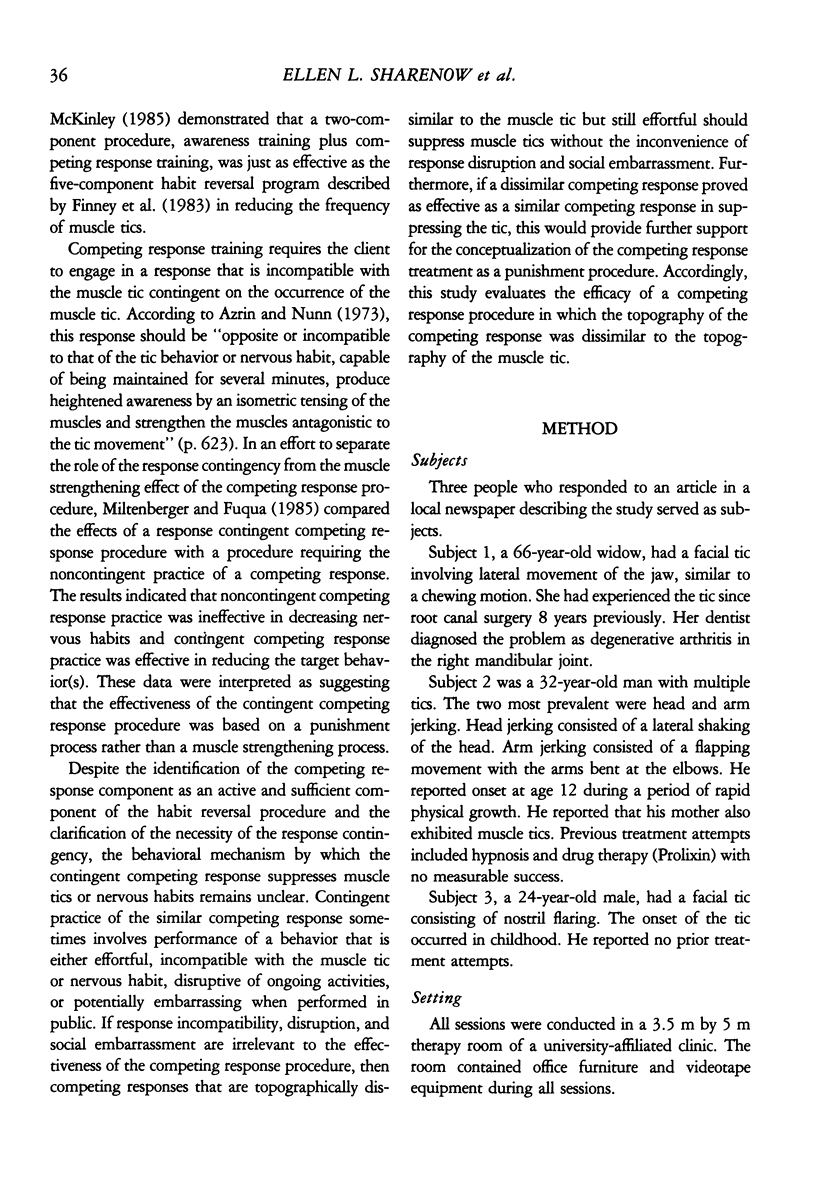
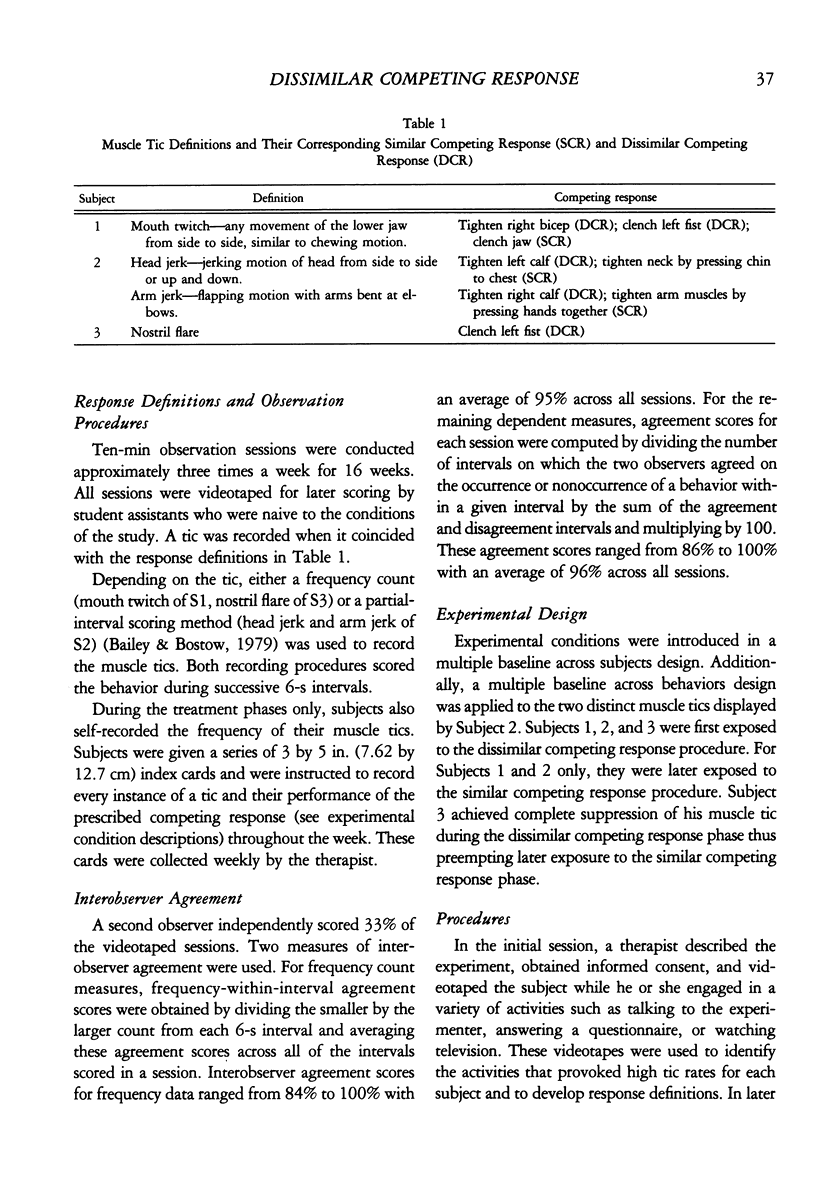
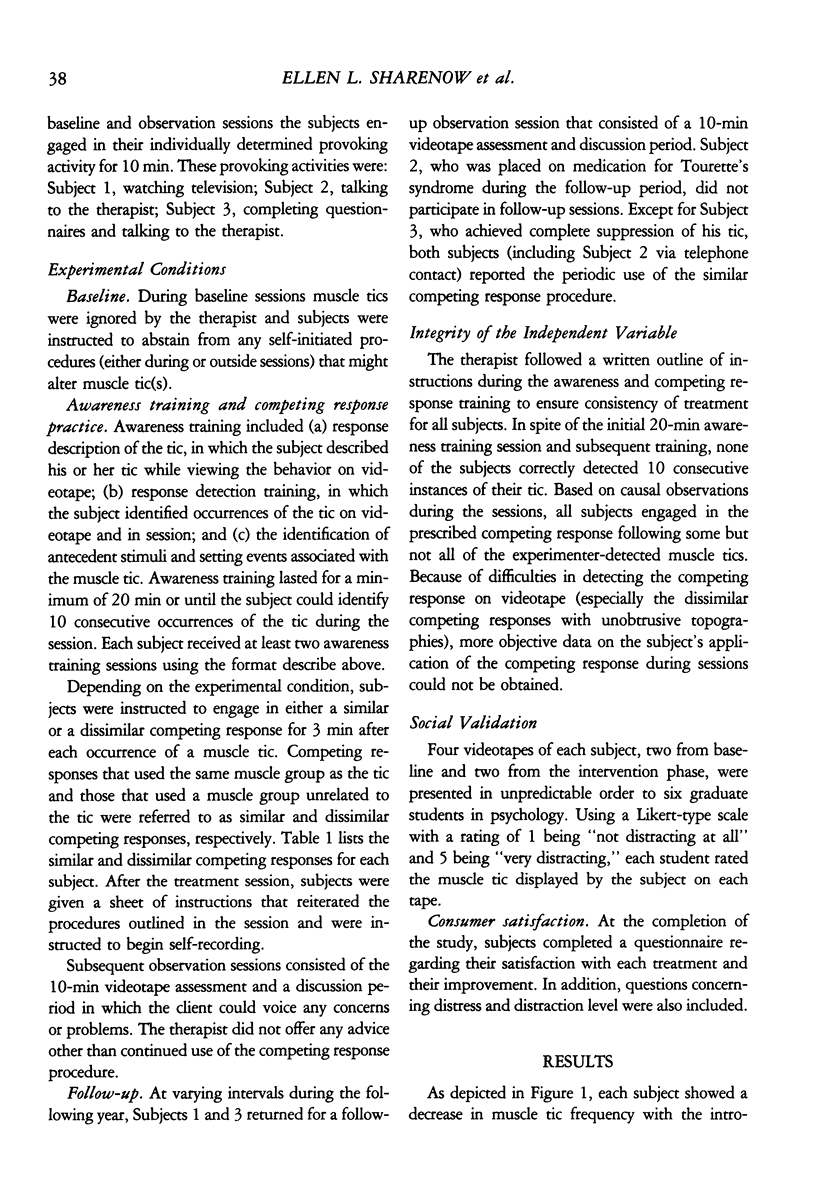
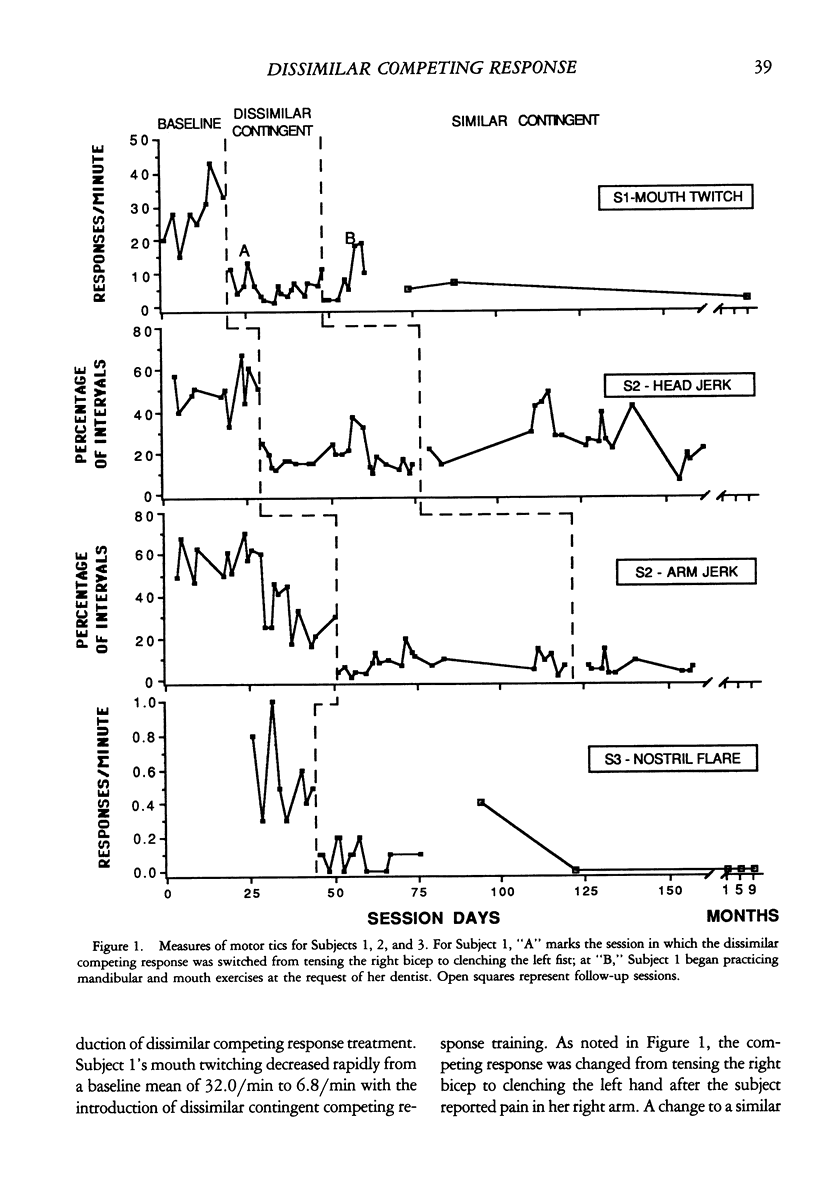
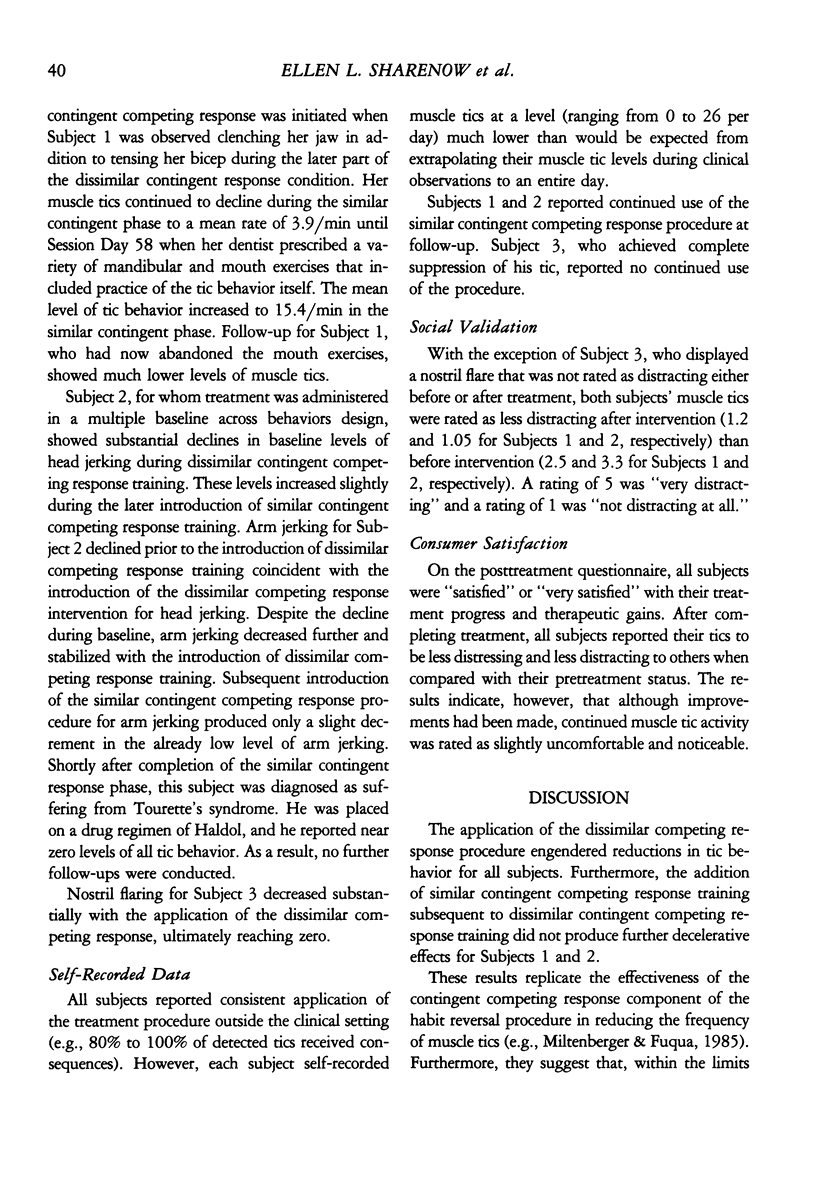
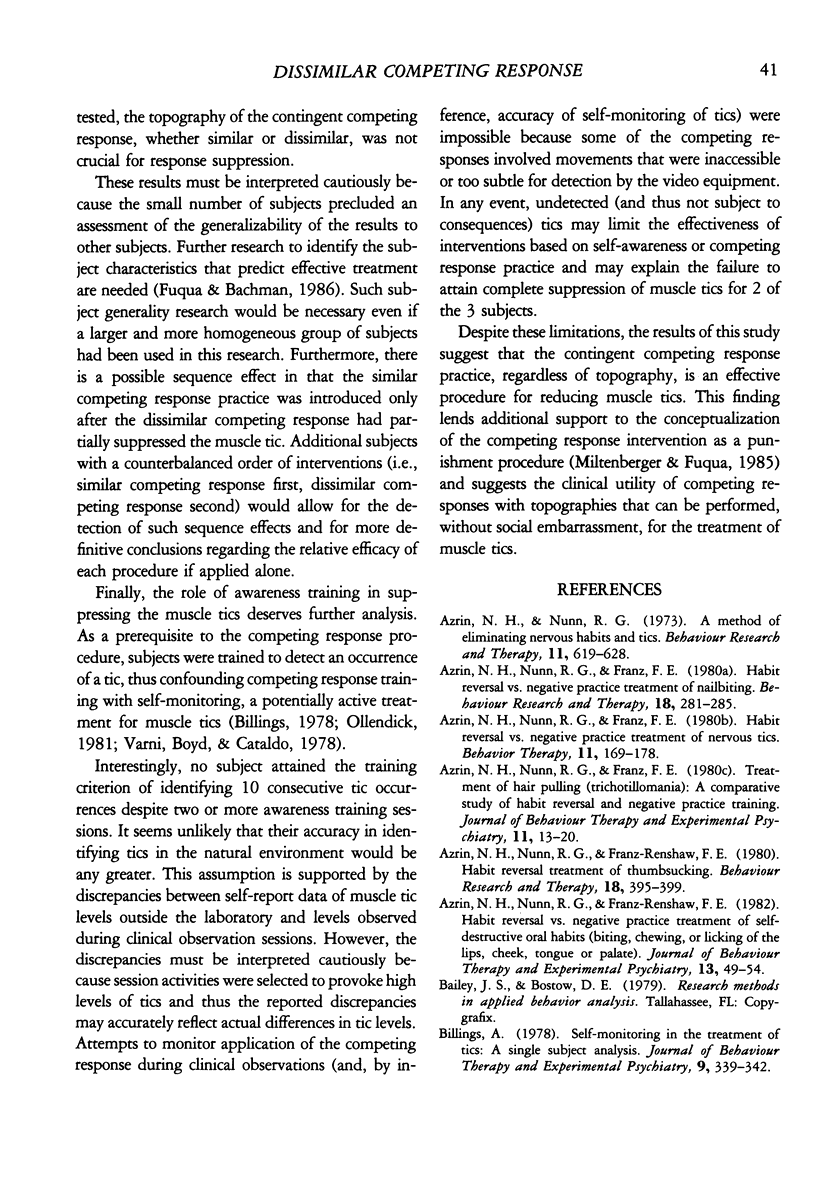
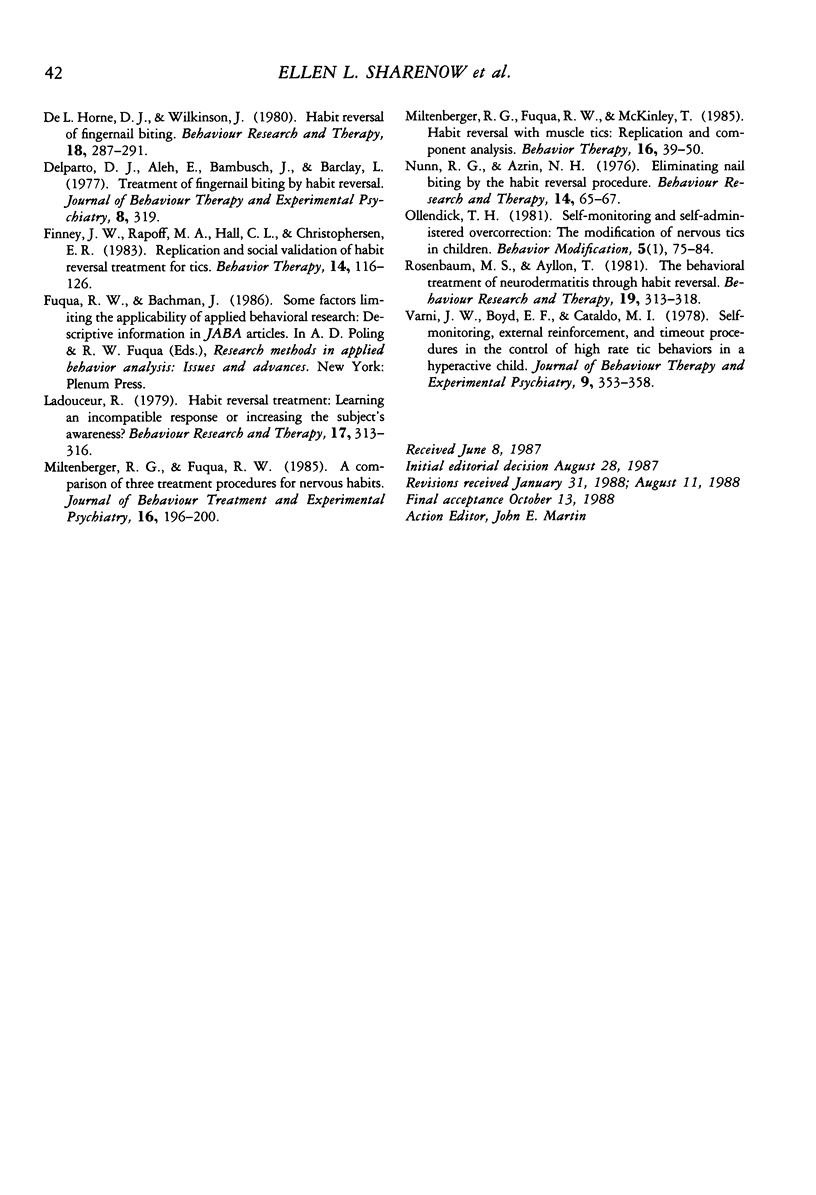
Selected References
These references are in PubMed. This may not be the complete list of references from this article.
- Azrin N. H., Nunn R. G., Frantz-Renshaw S. E. Habit reversal vs negative practice treatment of self-destructive oral habits (biting, chewing or licking of the lips, cheeks, tongue or palate). J Behav Ther Exp Psychiatry. 1982 Mar;13(1):49–54. doi: 10.1016/0005-7916(82)90035-0. [DOI] [PubMed] [Google Scholar]
- Azrin N. H., Nunn R. G., Frantz-Renshaw S. Habit reversal treatment of thumbsucking. Behav Res Ther. 1980;18(5):395–399. doi: 10.1016/0005-7967(80)90004-2. [DOI] [PubMed] [Google Scholar]
- Azrin N. H., Nunn R. G., Frantz S. E. Habit reversal vs. negative practice treatment of nailbiting. Behav Res Ther. 1980;18(4):281–285. doi: 10.1016/0005-7967(80)90086-8. [DOI] [PubMed] [Google Scholar]
- Azrin N. H., Nunn R. G. Habit-reversal: a method of eliminating nervous habits and tics. Behav Res Ther. 1973 Nov;11(4):619–628. doi: 10.1016/0005-7967(73)90119-8. [DOI] [PubMed] [Google Scholar]
- Horne D. J., Wilkinson J. Habit reversal treatment for fingernail biting. Behav Res Ther. 1980;18(4):287–291. doi: 10.1016/0005-7967(80)90087-x. [DOI] [PubMed] [Google Scholar]
- Ladouceur R. Habit reversal treatment: learning an incompatible response or increasing the subject's awareness? Behav Res Ther. 1979;17(4):313–316. doi: 10.1016/0005-7967(79)90003-2. [DOI] [PubMed] [Google Scholar]
- Miltenberger R. G., Fuqua R. W. A comparison of contingent vs non-contingent competing response practice in the treatment of nervous habits. J Behav Ther Exp Psychiatry. 1985 Sep;16(3):195–200. doi: 10.1016/0005-7916(85)90063-1. [DOI] [PubMed] [Google Scholar]
- Nunn R. G., Azrin N. H. Eliminating nail-biting by the habit reversal procedure. Behav Res Ther. 1976;14(1):65–67. doi: 10.1016/0005-7967(76)90046-2. [DOI] [PubMed] [Google Scholar]
- Rosenbaum M. S., Ayllon T. The behavioral treatment of neurodermatitis through habit-reversal. Behav Res Ther. 1981;19(4):313–318. doi: 10.1016/0005-7967(81)90052-8. [DOI] [PubMed] [Google Scholar]


